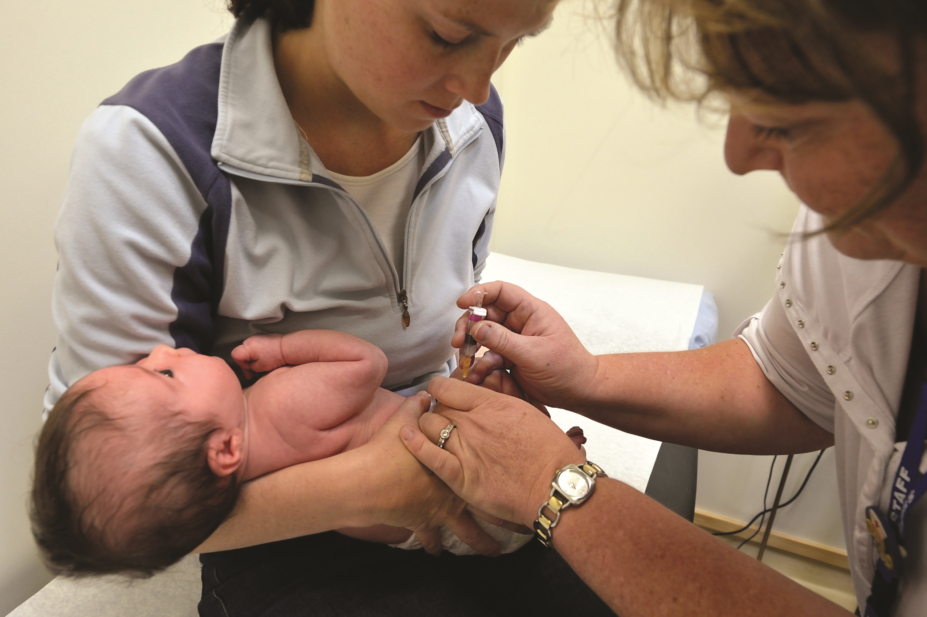
Shutterstock.com
Lead, stainless steel, iron particles and other inorganic material have been found in a sample of vaccines manufactured in France and Italy, according to a study.
The discovery baffled researchers who admit that the undue presence of the inorganic material is “for the time being inexplicable”.
Reporting their findings in the International Journal of Vaccine and Vaccinations
[1]
, they say: “The quantity of foreign bodies detected and, in some cases, their unusual chemical compositions baffled us.
“The inorganic particles identified are neither biocompatible nor biodegradable, that means that they are biopersistent and can induce effects that can become evident either immediately close to injection time or after a certain time from administration.”
The researchers, from the National Council for Research of Italy and the US International Clean Water Institute, set out to look at the physical – rather than biological – components of vaccine to discover whether they could answer some of the questions around unexplained side effects of some vaccines.
They looked at the composition of 44 vaccine samples from Italy and France using a powerful environmental scanning electron microscope. Some of the vaccines were targeting diseases such as tetanus, diphtheria, pertussis, hepatitis B, poliomyelitis, measles-mumps-rubella, chicken pox and meningitis.

Source: Antonietta M Gatti
Images of Tungsten particles in drops of Prevenar and Infanrix identified with an electron microscope
“Inorganic foreign bodies”, which had not been declared in product ingredients, were discovered in all cases.
In all samples they found particles of lead or stainless steel. Tungsten and other material including iron were also discovered.
The researchers say that the results of their investigation suggest a new “quality control” was needed in vaccine production to improve patient safety.
They write: “Our hypothesis is that this contamination is unintentional, since it is probably due to polluted components or procedures of industrial processes (for example, filtrations) used to produce vaccines, not investigated and not detected by the producers.
“If our hypothesis is actually the case, a close inspection of the working places and the full knowledge of the whole procedure of vaccine preparation would probably allow to eliminate the problem.”
However, the European Medicines Agency has heavily criticised the study, saying it “does not provide evidence that the quality of these vaccines is compromised”.
“Traces of many elements are present everywhere including air, water and food and are constantly being handled by the body,” the EMA says. “Thus, the presence of trace amounts of inorganic particles in medicines is not unusual and the manufacturing process for vaccines is designed to ensure that any such traces are kept well below safe limits.”
The regulator also thinks the study is “not well described from a scientific perspective and seems to have been carried out in a manner that might have affected its own findings”.
For example, in the way used to prepare the samples – which could have contributed to additional particle formation – the use of out-of-date products and the lack of appropriate controls, it says.
In addition, it says, the technique used in the study to look at inorganic particles does not allow measuring the exact amount of such particles. “The findings cannot support some of the authors’ subsequent conclusions or speculations about a possible role in causing side effects.”
The EMA highlights research and a summary document published by the French medicines regulatory authority (ANSM), which analysed metal particles in certain vaccines and concluded that trace levels of metal inorganic particles can be found in all the medicines analysed.
“The amounts of any particles found were exceedingly low which indicates that the controls during manufacturing are keeping impurities within safe limits. French experts further concluded that their findings are due to the presence of these types of particles everywhere in the environment and should not be considered a health risk.”
The EMA adds that vaccination has greatly reduced the prevalence of infectious diseases and healthcare professionals and parents should continue to use them as recommended by health authorities.
Vaccine manufacturing in the European Union follows ‘strict’ quality control processes, including batch testing by the network of EU Official Medicines Control Laboratories before vaccines are released by national authorities, says the EMA.
- This story was amended on 14 February 2017 to fix a broken link and provide a link to a summary document produced by the ANSM.
References
[1] Gatti AM and Montanari S. New quality-control investigations on vaccines: micro- and nanocontamination. Int J Vaccines Vaccin 4(1):00072. doi: 10.15406/ijvv.2017.04.00072


